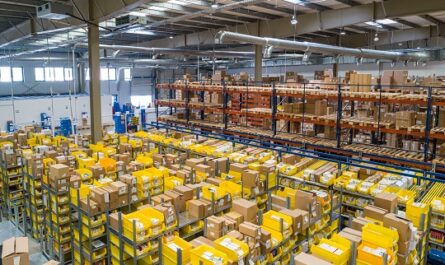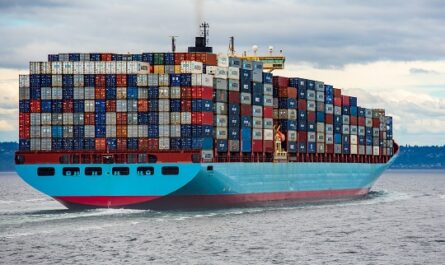Table of Contents
SCM stands for Supply Chain Management
The process of managing the flow of goods and services is called supply chain management. It includes all of the steps that go into making goods from raw materials. This means streamlining the business’s supply-side activities to give customers the best value and give the business a competitive edge in the market.
How SCM (Supply Chain Management) works
Supply chain management (SCM) is how suppliers try to make and use a supply chain that is as efficient and cost-effective as possible.
The supply chain includes everything from making things to coming up with new ideas for products to the information systems needed to run all of these things.
SCM usually tries to control or link the production, delivery, and distribution of products from one place.
Companies can save money and get products to customers faster if they take care of the supply chain. To do this, the company needs to keep a closer eye on its own inventory, production, distribution, sales, and vendor inventory.
SCM is based on the idea that almost every product on the market is made possible by the work of many different organizations. A supply chain is made up of these organizations that work together.
Supply chains have been around for a long time, but only recently have most businesses started to see them as a way to make their business better.
Before we go any further, make sure you have also joined the scmguide telegram channel to learn more about supply chain management.
SCM is made up of 5 parts
The people in charge of the supply chain try to keep costs low and avoid shortages.
Logistics and buying stock aren’t the only things that need to be done. Supply chain managers oversee and manage an organization’s entire supply chain and logistics operations to make them as efficient as possible and keep costs as low as possible.
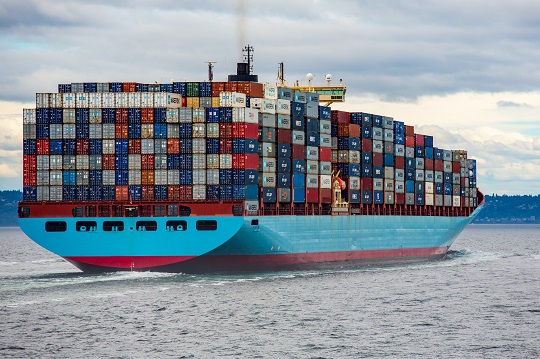
Productivity and efficiency improvements can have a direct effect on how much money a company makes. Good supply chain management keeps businesses out of the news and away from lawsuits and product recalls that cost a lot of money.
In SCM, the supply chain manager is in charge of all logistics along the supply chain, which are made up of the five parts below.
Planning
To get the best results from SCM, the process usually starts with planning to match supply with customer and manufacturing demand.
Companies have to “guess” what their needs will be in the future and then act on that information.
This has to do with the raw materials that are needed at each step of the SCM process, the capacity and limits of the equipment, and the number of workers that are needed.
Large organizations often use ERP system modules to gather information and make plans.
Sourcing
A big part of how well the SCM process works is how well the company works with its suppliers.
Part of sourcing is working with vendors to get the raw materials that will be used in the manufacturing process.
A company might be able to plan ahead and get goods by working with its suppliers.
But when it comes to sourcing, different fields will have different needs. In general, sourcing SCM means making sure that:
- The price paid for goods matches what the market expects.
- Raw materials meet the specifications needed to make goods.
- Vendors have the freedom to send emergency items if something unexpected happens.
- The seller has a track record of delivering goods to customers on time and in good condition.
Supply chain management is even more important when a company makes goods that go bad quickly.
Companies need to think about lead times and how well a supplier can meet their needs when they are looking for goods.
Manufacturing
Supply chain management is all about how a company uses machines, people, or other outside forces to turn raw materials into something new.
This final product is the end result of the whole manufacturing process, but this is not the end of supply chain management.
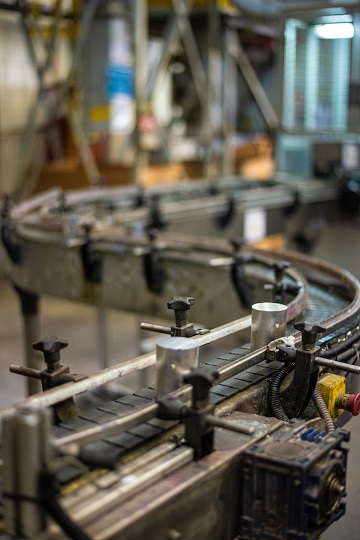
Making something can be broken down into smaller steps like putting it together, testing it, looking at it, or putting it in a box.
During the manufacturing process, companies need to be aware of waste and other things they can control that can change how things go.
For example, if a company uses more raw materials than planned and sourced because it doesn’t train its workers enough, it needs to fix the problem or go back to the beginning stages of SCM.
Delivery
After the sale is made and the product is made, the company must ship the product to the customer.
Because customers have never used the product before, the way it gets to them is often seen as part of the brand image.
When a company has a strong SCM process, it has strong logistics and delivery channels to make sure that products are delivered on time, safely, and cheaply.
This means having a backup or another way to ship your goods to the customer in case one of the transportation methods is temporarily unavailable.
Returning
The final step in the supply chain management process is helping customers and taking back products.
When the company makes a mistake, it’s even worse than when the customer has to send something back.
This is called “reverse logistics,” and companies need to make sure they can get the goods back and give the right refunds.
Whether the company recalls the product or the customer doesn’t like it, the interaction with the customer needs to be better.
People often think of customer returns as a way for the customer and the company to talk to each other.
But communication between companies is a very important part of customer returns. This is how companies find out which products are broken, out of date, or not up to par.
If the root cause of customer returns isn’t fixed, the supply chain management process has failed, and customers are likely to keep sending goods back.
You might also like:
Supply Chain vs. SCM
People, businesses, resources, activities, and technology all work together in a supply chain to make and sell a product or service.
When a supplier sends raw materials to a manufacturer, this is the first step in a supply chain. It is over when the customer gets the finished product or service.

SCM is in charge of everything about a company’s product or service, from the time it is made until it is sold.
With so many places in the supply chain where value can be added through efficiency or lost through higher costs, good SCM can help companies make more money, spend less, and increase their bottom line.
Different models of the supply chain
Supply chain management is different at every company.
Every business has its own goals, limitations, and strengths that shape its SCM process.
In general, companies can use one of six main supply chain management models as a guide.
- The Continuous Flow Model is one of the older ways to put together a supply chain. This model works best in industries that are already well-known. The idea behind the continuous flow model is that a company will keep making the same product and that customer needs won’t change much.
- The agile model works best for companies whose customers’ needs are hard to predict or whose products are made to order. This model gives companies the most freedom, since they may have special needs at any time and must be ready to change.
- The Fast Model is based on how quickly short-lived products can be sold. With the fast-chain model, a company tries to take advantage of a trend by making products quickly and selling them all before the trend ends.
- Flexible Model: This model works best for businesses that have to deal with changing seasons. Some companies may have to meet much higher demand during peak season, but other times they may only have to meet lower volume requirements. A flexible supply chain management model makes it simple to speed up or slow down production.
- Efficient Model: Businesses that compete in industries with low profit margins can try to get an edge by making their supply chain management processes as efficient as possible. This means using equipment and machinery in the best way possible, keeping track of inventory, and taking care of orders in the best way possible.
- Custom Model: If no other model fits the needs of the business, you can always use a custom model. This is often the case in industries with a lot of specialization and technical requirements, like making cars.
What makes supply chain management so important?
Supply chain management is important because it can help a business reach a number of goals.
For example, keeping control of the manufacturing process can improve product quality, lower the risk of recalls and lawsuits, and help build strong consumer brands at the same time.
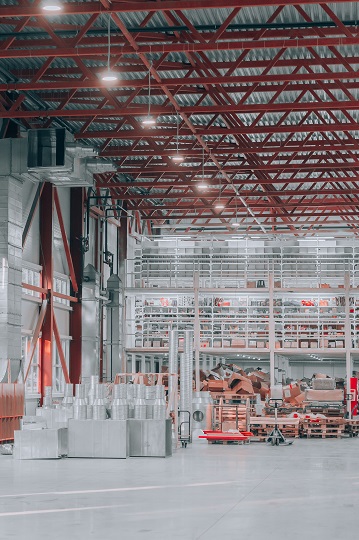
At the same time, keeping an eye on the shipping process can help improve customer service by making sure there aren’t too few or too many items.
In general, supply chain management gives businesses a lot of ways to make more money. This is especially true for big businesses with operations all over the world.
Costs, waste, and production time are kept to a minimum by a supply chain management system that works well. “Just in time” supply chains are the norm in today’s business world. When something sells in a store, orders are automatically sent to the factory to make more. Then, the product can be put back on the shelf almost as soon as it goes on sale.
One way to improve this process is to look at data from partners in the supply chain to find other ways it could be improved.
By looking at information from partners, good supply chain management adds value to the supply chain cycle in three ways:
- Identify potential problems. When a customer orders more than the company can deliver, the buyer can say that the company is giving bad service. By looking at the data, producers may be able to predict when there will be a shortage before buyers are let down.
- Adjust prices quickly. Seasonal things don’t last long. When the season is over, these things are often thrown away or sold for very little money. Prices for airlines, hotels, and other “products” that change quickly often change when asked. With the help of analytical software, the same kinds of forecasting methods can be used to increase margins even for hard goods.
- Getting better at allocating inventory that is “available to promise.” Analytics software helps schedule work and divide resources based on expected sales, actual orders, and when raw materials are expected to arrive. When an order is placed, the company that makes the product can tell the customer when it will be shipped. This lowers the chance that the order will be wrongly filled.
A good supply chain management system should include
The part of a business that customers and consumers see the most is the supply chain. The company’s reputation and long-term survival will be better protected if its supply chain management is better and more effective.
In the future, there will be five “Cs” that will make supply chain management work well:
- Connected: able to use ERP and B2B integration tools to access unstructured data from social media, structured data from the Internet of Things (IoT), and more traditional datasets.
- Collaborative: More and more businesses are using cloud-based commerce networks to help them work together and communicate with each other. This is a way to improve collaboration with suppliers.
- Cyber-aware: Supply chains need to protect their systems from cyber intrusion and hacking by making them stronger. Everyone in the business should care about this.
- Cognition-enabled: The AI platform becomes the control tower of the modern supply chain by collecting, coordinating, and carrying out decisions and actions across the chain. Most supply chains are run by machines that learn on their own.
- Comprehensive: Analytics must be able to grow with real-time data. There will be a lot of quick information. In the future, there shouldn’t be any wait time in the supply chain.
This process has already begun in many supply chains. Cloud-based trading networks are always used by a lot of people, and a lot of work is being done to improve analytics.
You might also like:
- 9 of the Most Common Reasons Why You Might Have Excess Stock
- 10 Ways to Reduce Supply Chain Costs by a Huge amount
What does ethics have to do with supply chain management?
Ethics have become so important in supply chain management that a set of rules called “supply chain ethics” needs to be made.
Consumers and investors care about how businesses make their products, treat their employees, and take care of the environment.
So, the company takes steps to cut down on waste, make working conditions better, and have less of an effect on the environment.
What kind of supply chain management software can be used?
In the modern world, technology is a key part of managing supply chains, and ERP vendors offer modules that focus on key SCM functions.
There are also companies that sell SCM-focused business software.
Here are some things you should remember:
- supply chain planning software for tasks like managing demand;
- supply chain execution software for day-to-day manufacturing operations;
- supply chain visibility software for tasks like recognizing and anticipating risks and managing them proactively;
- inventory management software for tasks like tracking and optimizing inventory levels;
- logistics management software and transportation management systems for tasks like managing shipments.
Supply chains are becoming more global, and e-commerce, which focuses on small, almost instantaneous deliveries directly to consumers, is growing.
This makes things hard, especially when it comes to logistics and planning for demand.

Some old strategies, like lean manufacturing, and some new ones, like demand-driven material requirements planning, can help.
Technologies like big data, predictive analytics, IoT technology, supply chain analytics, robotics, and autonomous vehicles are also being used to solve modern problems like supply chain risk and disruption and supply chain sustainability.
As just two examples, IoT can help with transparency and traceability to improve the quality and safety of food by using sensors to track the temperature of perishable foods in transit. And analytics can help figure out where to put smart lockers in areas with a lot of people to cut down on shipping single items and cut down on greenhouse gas emissions.
SCM and Industry 4.0 go hand in hand
People call the use of radically new technologies in manufacturing today “Industry 4.0” or the “fourth industrial revolution.”
In the latest round of industrialization, technologies like AI, machine learning, the Internet of Things, automation, and sensors are changing how companies make, maintain, and distribute new products and services. You could say that Industry 4.0 is built on the supply chain.
Businesses use technology in the supply chain very differently in Industry 4.0 than they did in the past.
For example, when it came to maintenance, the company used to wait until a machine broke down before fixing it. Smart technology has made that no longer true. We can now tell if something will fail before it does. Then we can do something to stop it so that the supply chain can keep going.
Today, supply chain management is all about using technology to make supply chains and businesses as a whole smarter.
Industry 4.0 is the fourth industrial revolution. SCM also has a big advantage over traditional SCM in that it lets planning and execution work together and saves a lot of money at the same time.
For example, a company that uses a “plan to manufacture” model, in which the production of a product is tied as closely as possible to customer demand, must make accurate estimates.
That means juggling a lot of different inputs to make sure that what is made meets market needs without being too big. This keeps expensive overstock from happening. Smart SCM solutions can help you meet your financial goals and the needs of your customers.
Smart SCM can also help in other ways. For example, it could free up people in the supply chain to do more important work for the business.
Better SCM systems that automate boring tasks can give professionals in the supply chain the tools they need to deliver products and services that are built around the supply chain.
SCM is all about the customer today
SCM has always been about saving money and making things run better.
Even though these needs haven’t changed, the way SCM priorities are set has. Now, the customer comes first. “The supply chain makes or breaks the customer experience,” you could say.
Businesses must be able to meet customers’ needs quickly and correctly if they want to keep their customers coming back.
Raw materials, manufacturing, logistics, and trade and order management all have to work together to get items to customers in a reasonable amount of time.
To do this, businesses need to look at their supply chain from their customers’ points of view. It’s not enough to send orders to customers on time; everything has to be done at the right time, before, during, and after it’s made.
You might also like:
- 8 Good Ways to Bring Down the Cost of Running a Warehouse
- 4 Important Things to Put in Your Logistics Budget
How quickly the supply chain needs to be able to change
The supply chain of today is big, complicated, and always changing, so it needs to be flexible in order to work well.
In the past, supply chains met the needs of businesses and customers with a model that worked from beginning to end and didn’t change much.
People can now buy things in stores, online, and in other ways. They also want things to be made for them more and more. A flexible supply chain can meet these needs.
Not only that, but the part of the supply chain that deals with getting things is very smooth. For example, changes in geopolitics and the economy can have a big effect on the supply chain for making things.
If trade policies make it so that a company that needs aluminum can’t get it from one supplier, the company must look for other sources right away.
You need to be able to change your supply chain quickly to deal with situations like this. You have to be very flexible to make changes like this in real time.
There are more problems in the supply chain than just issues with efficiency and managing costs. How well people follow the rules can also be affected by changes in their lives. Your SCM system needs to be flexible enough to deal with all of the effects of changes in the supply chain, like new regulations and other changes.
A smart SCM system can help you be more productive, save money, and stay in compliance with laws that change all the time.
SCM and the Cloud
Since SCM works the way it does now, the cloud is a natural partner. This is because applications that run in the cloud are naturally more flexible and able to adapt to changes.
It’s hard to change on-premises applications and custom code to adapt to the constantly changing business environment of today, such as unexpected source issues.
The way cloud solutions are made also makes it easier to use technologies that are becoming more common in the Industry 4.0 model. Changing your environment so that this technology can work with your existing applications is hard and expensive.
If you add the cloud to your SCM system, you can deploy parts of the cloud-based SCM based on what your business needs, without doing a full-scale migration.
Many businesses have to decide quickly if they want to move to the cloud or not.
The best SCM systems help you get more value out of the assets you already have and customize your cloud integrations to meet your current and future SCM needs.
Conclusion
Supply Chain Management is a way to keep track of the flow of goods and services (SCM).
SCM is based on the idea that almost every product on the market is made possible by the work of many different groups.
Good supply chain management keeps businesses out of the news and keeps them from getting sued or having to recall expensive products.
When a company makes goods that go bad quickly, supply chain management (SCM) is even more important. If a company has good SCM, it can make more money and make more money per customer.
Supply chain management is the process of making sure that all tasks needed to make and deliver goods and services to customers are done at the right time and in the right place.
In this business, “just in time” supply chains are now the norm. When something sells in a store, the factory gets an order to make more of it. Supply chain management is a way for businesses to make more money in many ways.
The supply chain is the part of the business that customers and consumers see the most. The better the company’s supply chain management, the better it will protect the business’s reputation and long-term survival.
Planning, getting raw materials, making things, delivering them, and getting them back are the five most important parts of supply chain management (SCM). SCM is the way that the whole supply chain is managed.
Technology is a big part of managing the supply chain in the modern world, and ERP vendors offer modules that focus on key SCM functions.
SCM is all about using technology to make both the supply chain and the business as a whole smarter. Smart SCM is also much better than traditional SCM because it lets planning and execution work together and saves a lot of money.
The supply chains of today are big, complicated, and always changing. There’s more to a supply chain than just making sure it works well and costs stay low. For example, changes in geopolitics and the economy can have a big effect on the supply chain for making things.
To handle situations like this the right way, you need to be able to change your supply chain quickly. The SCM system for the supply chain must be flexible enough to deal with all of the effects of changes in the supply chain, such as new regulations and other changes.
The best SCM systems help you get more value out of the assets you already have and let you customize your cloud integration to meet your current and future SCM needs.
Share this article with your other coworkers and join the scmguide telegram channel to learn more about supply chain management. You can use any article from this blog for any reason, even for money, without giving credit.
 by
by 